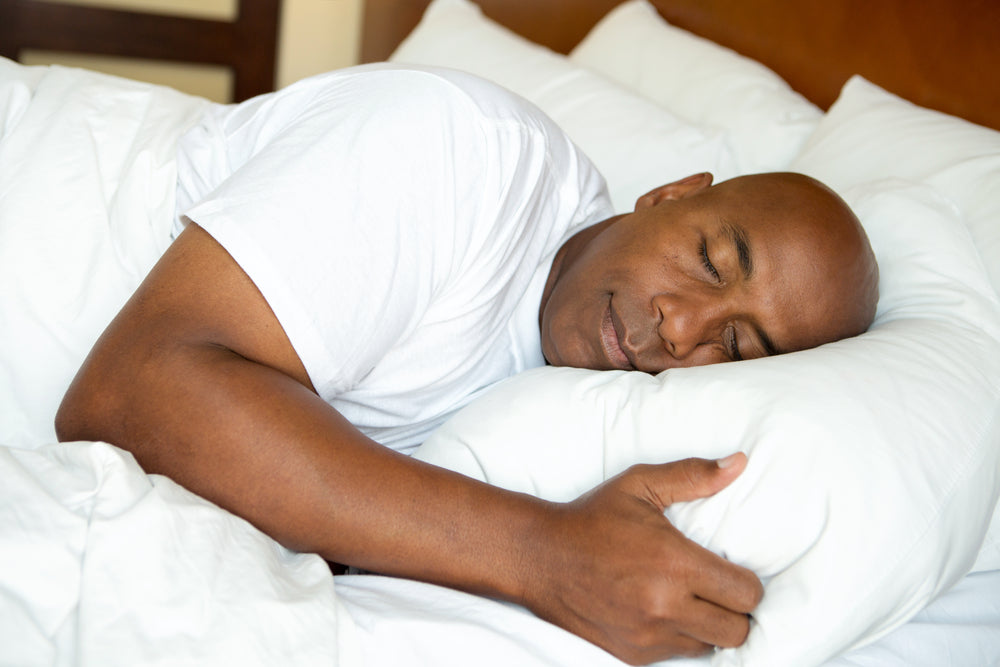We know that deciding to undergo a sleep study can be an overwhelming decision, but you have options available to you that can help reduce not only the financial cost but also the worry and anxiety that can come with it. Home sleep tests are a great option for those who believe they are a likely sufferer of Obstructive Sleep Apnea (OSA), a condition where muscles and soft tissue can block the airway during sleep. We want to help you understand more about the home sleep test option and what to expect if you choose to do your sleep study from the comfort of home.
What is a Home Sleep Test?
A home sleep test is an overnight unattended sleep study that is performed in the comfort of your own home, in your own bed. After receiving your Home Sleep Test (HST) device and activating the recording session, the device will monitor a series of biometric data while you sleep—breathing patterns, blood oxygen saturation, heart rhythms, respiratory effort, sleep positions, and more. After you mail the device back to your HST administrator, a board-certified sleep physician will interpret your results, giving you a diagnosis and, if necessary, a prescription for a treatment machine. Please note, that HSTs are only approved for adults 18 years and older and are frequently limited to only testing for Obstructive Sleep Apnea (OSA).
Is a Home Sleep Test Uncomfortable or Painful?
While all sleep studies can come with some level of discomfort, home sleep tests are far more comfortable and convenient than in-lab sleep studies—not to mention far cheaper in most cases, even with insurance. Rather than going to a sleep lab or hospital and trying to sleep in unfamiliar surroundings, HSTs allow you to sleep in your bed, at home, while still having your biometric data monitored. The device is small and relatively uncomplicated and you should be able to sleep normally while wearing it.
How Do I Order a Home Sleep Test?
Ordering your home sleep test is quite simple. You’ll reach an online ordering page where you can easily add a sleep study to your cart from your computer, tablet, phone, and most other internet-enabled devices, similar to online shopping. Once you add the test, you will choose from a variety of shipping options and enter in your appropriate shipping information. Once complete, you will pay for the cost of the test and shipping with your credit or debit card information. Your sleep testing unit will then be sent to your provided address once check out and processing is complete.
How Will I Know How to Use a Home Sleep Test?
Your HST will come with a few pieces of equipment you will be able to easily wear and activate, including a portable sleep data monitor, a chest strap, a heart rate sensor, and a nasal cannula. You will also be provided with detailed instructions that will outline how to properly position all of these parts and how to activate your monitor to record your sleep behaviors. All of this together will result in a successful sleep test and collect appropriate data for a diagnosis.
When Do I Get My Results Back?
While in-lab sleep tests can take much longer to analyze because of all the extra pieces of data they must interpret, HSTs have a much faster turnaround time. Once you wear the device during a successful night of sleep, you will mail it back for the data to then be interpreted by a board-certified sleep physician. Once those results are interpreted properly and a diagnosis has been given, a patient care representative will call you to discuss your results and treatment options, if applicable. This process can take between 10-14 business days.
How Long Do I Have to Be Asleep?
We advise that, when undergoing your HST, you stick to your normal bedtime routine. You shouldn’t behave any differently during your pre-bedtime routine than you would on any other night and try to get to bed and wake up around your usual times—which should constitute a full night’s sleep. Once you are wearing the device properly, turn it on when you get into bed even if you don’t fall asleep right away. The best rule is to try to get at least 3 straight hours of uninterrupted sleep for more accurate results.
What If I Wake Up During the Night?
If you need to get up in the middle of the night for any reason (use the bathroom, let the dog out, check on a child, get some water, etc.), please make sure to leave your device on and recording. Again, it is imperative that you wear the activated device all night regardless of what happens during that time. Once you wake up and get out of bed for the day, only then should you turn off the device and take it off to send it back for analysis.
We hope that this answers some of your questions about home sleep tests. Feel free to contact us with any additional questions. Now is the best time to get tested for sleep apnea and ultimately take the steps necessary to improve the quality of your sleep.

